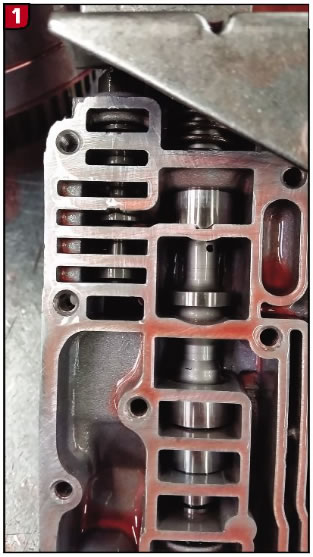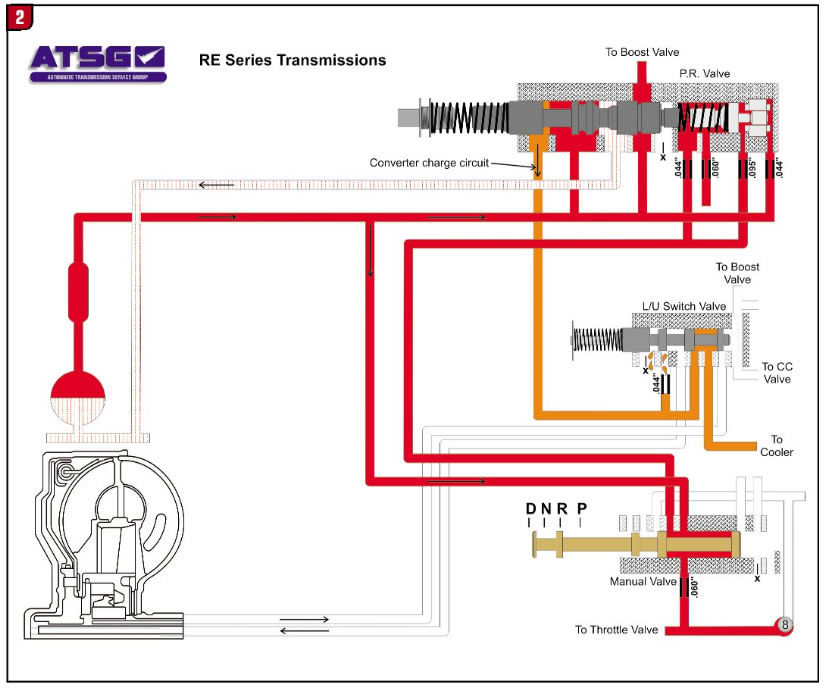
Shift Pointers
- Author: Wayne Colonna
- Subject Matter: 42RE
- Issue: Fluid level
It’s always unsettling when a transmission comes back after the customer has had it for only an hour; especially when it came back on a hook. Such was the case at a local transmission shop with a 42RE transmission.
A stock Torqueflight valve body does not charge the converter in park. The first diagnostic was to check the fluid level. The tech knew the valve body was un-modified so fluid level had to be checked in neutral since park would give a false reading.
Checking the fluid level revealed that it was overfull. The tech then pulled the rear cooling line to see if there was cooler flow in neutral and there was. While seeing flow, this seemed to suggest several things: the filter, pump and pressure regulator valve were functioning, supplying the converter with fluid. This assumption then suggested that something went wrong mechanically, a stripped spline or a snapped drive train component. For this reason, the decision was then made to pull the transmission for a complete inspection.

Several checks can be made without disassembling the transmission to determine if the transmission should come apart. The first check made was to inspect the turbine shaft splines in the converter and all was good there. Removing the valve body and placing the linkage into park was the next step. A pair of vice grips was then carefully placed onto the turbine (input) shaft to rotate it in a clockwise direction while supplying compressed air to the rear clutch (forward clutch). When this was done, the turbine shaft would not rotate, confirming the gear train was capable of first gear.
Performing the same type of test by supplying compressed air to both the front (direct) clutch and low/reverse band confirmed the gear train was capable of providing reverse. After these diagnostic steps were taken, the decision was made to change the torque converter and install the transmission back into the vehicle.

After placing four quarts of oil into the transmission, the vehicle was started with the selector lever in neutral. Four additional quarts of oil brought the fluid level close to the full mark. Near 10 quarts is needed to fill this transmission, so this was an indication something was still wrong. This indication proved to be correct as the vehicle still did not move. This time, the valve body came out and was taken apart for inspection. It only took a few minutes to discover the lock-up switch valve was jammed in a stroked position by an unidentified piece of debris (Figure 1).

Looking at the schematic in Figure 2, converter charge pressure from the pressure regulator valve was directed to the cooler circuit via the jammed lock up switch valve and not the converter. This allowed cooler flow with an empty converter. But it’s a good lesson that seeing cooler flow does not necessarily mean you have converter charge pressure in some applications. This is also a good lesson: Whenever you put slightly less than the required fill in a transmission yet it reads high on the stick after starting the engine, suspect first that the converter is not being filled.















